I just learned that my 2nd cousin passed away this past Monday. She was an amazing woman!
Joan Leslie Caldwell
 January 26, 1925 - October 12, 2015 Joan Leslie Caldwell, one of the stars of stage and screen in the golden age of Hollywood, died October 12, 2015, at age 90, in Los Angeles, CA. Born in Detroit, Michigan, the youngest daughter of John Brodel, a bank teller, and Agnes, pianist and homemaker, Joan and her two sisters, Mary and Betty, performed on stage in their hometown and New York City, later touring from Canada to Florida.
January 26, 1925 - October 12, 2015 Joan Leslie Caldwell, one of the stars of stage and screen in the golden age of Hollywood, died October 12, 2015, at age 90, in Los Angeles, CA. Born in Detroit, Michigan, the youngest daughter of John Brodel, a bank teller, and Agnes, pianist and homemaker, Joan and her two sisters, Mary and Betty, performed on stage in their hometown and New York City, later touring from Canada to Florida.
When a talent scout saw them perform and signed her older sister Mary to a contract at MGM, the family moved to Burbank, CA and at fifteen, Joan was screen testing with Warner Brothers, winning the coveted role of the crippled girl in High Sierra with Humphrey Bogart. The next year, she was selected as Gary Cooper's leading lady in Sergeant York. She celebrated her seventeenth birthday on the set of Yankee Doodle Dandy, in the role of the wife of Academy Award winner James Cagney. She co-starred in over 30 films, including The Sky's the Limit, Thank Your Lucky Stars, Hollywood Canteen, Rhapsody in Blue, This is the Army, and Repeat Performance.
Following her marriage in 1950 to Los Angeles physician William G. Caldwell, she shifted her attention to family and charitable activities, including Father Patrick Peyton's Family Theatre radio series and St. Anne's Maternity Home. After her twin daughters were grown, she returned to television to make commercials and an occasional appearance in a drama series, including Charlie Hannah with Robert Conrad, Fire in the Dark with Olympia Dukakis and TV shows Charlie's Angels, The Incredible Hulk, Police Story, Simon and Simon, and Murder She Wrote.She continued her involvement in parish work, the Los Angeles Public Library after-school reading program, and the advisory board of the Damon Runyan Cancer Fund.
Funeral mass will be celebrated at 10:00 am on October 19 at Our Mother of Good Counsel Church. In lieu of flowers donations may be made to Our Mother of Good Counsel Church, 2060 N Vermont Ave, LA, 90027 or St. Anne's, 155 N Occidental Blvd. LA, 90026.
Published in the Los Angeles Times from Oct. 15 to Oct. 17, 2015
MORE:
http://cathy-palmer.blogspot.com/2008/03/cousin-joan.html
OCTOBER 16, 2015 UPDATE
OCTOBER 16, 2015 UPDATE
Joan Leslie, a Hollywood Girl Next Door, Dies at 90
Joan Leslie, an actress remembered for fresh-faced ingénue roles in movies of the 1940s, including “High Sierra,” “Sergeant York” and “Yankee Doodle Dandy,” died on Monday in Los Angeles. She was 90.
Her family confirmed the death.
Her family confirmed the death.
Ms. Leslie, who was known in private life as Joan Leslie Caldwell, began her career in a vaudeville act with her two older sisters. Before she was out of her teens she had become known for film roles including Velma, the young disabled woman with whom Humphrey Bogart falls in love in “High Sierra” (1941); Gracie, the love interest of Gary Cooper in “Sergeant York” (1941), a role she landed on her 16th birthday; and Mary, the bride of George M. Cohan (played by James Cagney) in “Yankee Doodle Dandy,” released in 1942.
By the early 1950s Ms. Leslie had left motion pictures to focus on marriage and motherhood, though she continued to act on television during the next four decades.
Joan Agnes Brodel was born in Detroit on Jan. 26, 1925. As a child, she joined her sisters, Mary and Betty, in a song-and-dance act; touring the country as the Brodel Sisters, they helped sustain the family during the Depression. Young Joan also proved to be an accomplished mimic — her impressions included Greta Garbo, Katharine Hepburn and Jimmy Durante — and before long those were incorporated into the act.
Signed by MGM in 1936, Joan attended the studio’s backlot schoolhouse, where her classmates included Mickey Rooney and Freddie Bartholomew. In her earliest credited films — including “Winter Carnival” and “Two Thoroughbreds,” both from 1939 — she was billed as Joan Brodel. But after she moved to Warner Bros. in the early 1940s, her name was deemed too similar to that of its star Joan Blondell, and the studio christened her Joan Leslie.
The young, red-haired Ms. Leslie was admired by moviegoers for the girl-next-door innocence she brought to the screen.
“In my case, I really was a nice girl; my family sheltered me,” she told The Toronto Star in 1990. “Once, at a reception for exhibitors, Errol Flynn approached me” — he was a notorious roué — “and the photographers clicked away. Studio head Jack Warner was furious. He ordered the pictures destroyed, because it might damage my good-girl reputation!”
Her other films include “The Male Animal” (1942), starring Henry Fonda; “The Hard Way” (1943), starring Ida Lupino; “The Sky’s the Limit” (1943), in which she danced with Fred Astaire; “This Is the Army” (1943), starring Ronald Reagan; “Cinderella Jones” (1946), in which she played the title role; and “The Skipper Surprised His Wife” (1950), opposite Robert Walker.
On television, Ms. Leslie had guest roles on “General Electric Theater,” “Police Story,” “Charlie’s Angels,” “The Incredible Hulk” and “Murder, She Wrote.”
A longtime resident of Los Angeles, Ms. Leslie worked in later years as a couture designer, with her own line, and devoted time to charitable causes.
Ms. Leslie’s husband, William Caldwell, a medical doctor whom she married in 1950, died in 2000. Survivors include twin daughters, Patrice Caldwell and Ellen Caldwell, and her sister Betty, now known as Betty Franzalia.
In the interview with The Toronto Star, Ms. Leslie recalled a formative theatrical experience that might well have rattled a far more seasoned performer. At 9, touring with her sisters, she played Toronto. Their act included her impression of Durante.
One night after the show, her dressing room door opened to reveal a man armed with nothing but criticism. Her Durante was all wrong, he told her. Unbidden, he showed her the right way to do it.
The caller was Jimmy Durante, and young Joan took it in stride.
http://www.nytimes.com/2015/10/16/movies/joan-leslie-a-hollywood-girl-next-door-dies-at-90.html?_r=0
OCTOBER 17, 2015 UPDATE
Remembering Joan Leslie

In 1940 the pretty, adolescent Joan Brodel won the leading role in a Warner Bros. short-subject called Alice in Movieland about a girl’s dreamlike experience in Hollywood: spotted on the set, given the lead in a major movie, becoming a star and winning an Academy Award. Never was casting more ironic—or prophetic—because Brodel’s real-life story wasn’t so different from that piece of fluffy fiction. After several years of appearing in tiny roles she was signed by Warner Bros. and, as Joan Leslie, costarred with Gary Cooper in Sergeant York, Humphrey Bogart in High Sierra, James Cagney in Yankee Doodle Dandy, and Fred Astaire in The Sky’s The Limit—all before she turned eighteen! (Not so incidentally, Warner Bros. reissued Alice in Movieland and re-filmed the main titles to feature Leslie’s “new” name as well as her star billing. You can see the short on Turner Classic Movies, or on the Warner Home Video DVD of The Sea Hawk)
Joan Leslie gave many interviews about her career and her notable costars—she adds a great deal to the hour-long DVD documentary on the making of Yankee Doodle Dandy—but I was curious about her earliest experiences in Hollywood, and I wanted to learn more about day-to-day life as a contract player under the studio system. She was happy to oblige, in 2006, although when I made the mistake of referring to her as a onetime extra she politely but firmly corrected me.
LM: Please explain the difference between an extra and a bit player.
JL: I had lines; I had scenes in films like Men With Wings and that little picture at Columbia, Military Academy. If you have lines, you're not an extra. And at that time, I don't think you were in the union if you were an extra. I had an agent, you see.
LM: Would you go for readings?
JL: Yes. I remember one picture out at Fox, for instance. [My agent] said, “There'll be others there up for the same part; it's a Jones Family series [picture].” That's all they told me. I got there and there were two or three other young ladies there, and the producer and director were sitting at their desks. We were standing in front of them and they were looking at us and they said, "We would like somebody with a Southern accent." And nobody said anything, so I said (in Southern accent), "Well, y'all, you come to the right gal. You want to talk to me?” I talked as Southern as I could come up with and that's all I needed to do, to show initiative.

Joan, at left, poses with her sisters Mary and Betty Brodel in this 1942 Warner Bros. publicity shot
JL: You had to sense a lot of it. When you'd go to makeup, then they'd say, it's on Stage 12. You go down there and report to the first assistant. You'd just look around until you found who the first assistant was; you'd feel your way out, trying not to make mistakes. Then, [it’s] the second assistant [who] would call you, so you'd get to know his name. And in a nice, open way, you'd get to know people's names. I remember that when I'd come back from lunch, I'd always bring a couple of packs of gum and I'd give anybody that I'd made acquaintance of that morning a stick of gum. It was casual so that they’d kind of remember me.
On the set you just have to listen very closely, listen to everyone around you, absorb everything and try to be what they want you to be with the little bitty line that you'd have to say. If it was a good line, it would be such fun to say it with vigor, you know. In Winter Carnival, when they asked me what school I went to, I wasn't a college student, so I had to lie; I pretended to be a French girl and said it was the Sorbonne in Paris! And oh, they were surprised at that and let me “go” in the scene, so that was fun to do. Then [my character] said “Jeepers!” all the way through. Whenever something exciting or happy happened I would say "Jeepers!" with such vigor that it knocked them over. You're so glad when you get a line like that, that you can play with and do something interesting with. That's the way it is: you have to show your initiative, you have to show talent and availability, and still have an awful lot of luck.
LM: Yes, but you had smarts, too. The way you were open and friendly and you picked up on things and followed through...that was smart.
JL: You have to do that. It was just part of the game, though...

Joan Leslie (then Joan Brodel) with June Wilkins, Elsie Esmond, and Lionel Barrymore in 'Camille' (1936)
JL: Yes, because everybody on the set is very sensitive and very with-it. Every person is there doing their job and they're aware of their importance and the importance of new people coming along ,and the big guys and how they should be treated—they all know it.
LM: Tell me about working in Camille.
JL: That was an experience. You know, I was signed at MGM just to do that bit, and I was only there six months. I had one line in the picture, which was cut out. I played Robert Taylor's little sister and it was in the scene where he comes home to see his father, Lionel Barrymore, and wants to seek his approval of him going with Camille, which, of course, he never got. He came home and I was being confirmed– a very Catholic service. That was to emphasize the straight-and-narrow of his life and how it had changed when he met Camille. I had a beautiful dress to wear; I had this one line and I had two coaches to tell me how to say it. Two! They worked with me for a couple of weeks before the shoot. I had to say, “Armand, so you did come all the way from Paris?” I had a French teacher telling me how to say Armand and an Englishman telling me how to say Paris, for about twenty minutes every day for a couple of weeks. Can you imagine that they would have coaches like that? Then that particular scene was cut out, but I had another scene and another dress and another occasion with Lionel Barrymore, in which I had no lines.
LM: So, you're still visible in it.

Can you spot Joan Leslie among the young people listening to Joan Crawford in this scene from 'Susan and God' (1940)?
LM: Susan and God with Joan Crawford...?
JL: I had lines in that and that was very interesting because it [was] a nice, long run. Rita Quigley played the daughter. Gloria De Haven had a very important part in it and I got to know her pretty well. There were some other nice young people, too, and we were all supposed to be the friends of the daughter of Joan Crawford. And they asked me if I had riding clothes and I said no. [They said] “We’ll fit you at wardrobe, that's all right.” So there was a scene out at their estate where all the youngsters have to ride by in the distance. I liked to ride. I was not an accomplished rider but I was a courageous rider and I happened to have gotten this liveliest horse of the bunch. It was kind of fun to ride him but he was not controllable. All we had to do was ride by and I think somebody in the front waved to the daughter as they went by. We went through several times and I sensed that I could not hold this horse. When we started making takes he got wilder than ever and he threw me and dragged me. I recall Fredric March came over and helped me up, and I was quite thrilled about that. But it scratched my face quite badly—
LM: You're lucky you got away with just a scratch.
JL: Yes, it was pretty scary, because that horse was very fast. If that happened later on, I'd have stopped and said, “I can't ride that horse.” But I didn't. I thought, “I'll show them.” But they [applied makeup over] that scratch and put me right in scenes. I think they deliberately put me in scenes where I showed in the background of scenes and fixed up my face or turned me in a way that it didn't show.

With Ronald Reagan in 'This is the Army' (1943)
JL: In the first scene in that picture, I think, he's leaving on a boat [and] all of his family and friends are there to see him off. I was just one of the family, maybe a cousin or something, and we were all trying out the beds and seeing what the ashtrays look like as they panned around the room, that's all. I don't even know if I showed. But it's a good movie, and I thought Joel McCrea was just such a great actor, so sweet and so handsome. Like Cooper, you know, that quality.
LM: Were you observing? Were you soaking all this in when you were on a set?
JL: No, not only was I observing, but I was thinking, ‘I'm on my way, I'll do better, I'm going to get better parts, I will be something some time.” I thought that. When I was little, at home in Detroit and going to dancing school and playing my accordion at benefits and at school and seeing Shirley Temple pictures, I thought, “I could do that.” We moved to New York when I was about nine or ten and then MGM signed me at ten or eleven and I got that taste and I thought, Mmm-hmm. [Then I went] back to New York and did modeling and radio work, all those things. Poor mama and dad, I wonder what they were thinking, because those were hard times. Then my sister came out under contract to Universal and she kept telling them they should have me out here because they were doing the [Deanna] Durbin pictures and I would fit in perfectly. Finally she brought me out, and mama, and I started to get little parts right away.
LM: You've talked so much about the classic films you've done, but I'm going to mention some of the great people you worked with and ask the first adjective that comes to your mind. Let’s begin with Jimmy Cagney.
JL: Well, let's see... Dynamic, I think. Because when he'd come on the set, that's when everything happened. The lights went on, the scene became live and you felt your part and he would make suggestions that would make everything better, you know. The set, the character actors, your part, everything would be improved because of what he brought to it with that style of his, his very strong style. You always see him pointing and doing things like this, because he was an indicator. He must have loved the business. But he really liked getting out of it, too. When he was in it, he was so at home in it and so good in it; he brought so much experience to backstage life, you know, in Yankee Doodle Dandy that he really made it come to life.

Joan “reacts” as Fred Astaire trades places with pianist/bandleader Freddie Slack on the set of 'The Sky’s the Limit' (1942)
JL: Well, I'd say, elegance. Everything that he did had his individual touch to it, whether he was just looking down at his shoe to see if the laces were tied, or he was about to read a line, or to say, "Oh, that was terrible the way I did that. Let's do it again. Can we do it again?" And, of course, in his dancing, his hand movements, his shoulders, the way he'd lead you, it was so easy to forget [about yourself].
LM: Gary Cooper?
JL: It's hard to believe what a genuinely sincere and nice person he was and how kind he was to me. He didn't talk down to me and he didn't treat me like a child, but like a competent co-worker. But with a touch of humor in everything and with a twinkle, so that you were absolutely charmed all the time. We were not introduced ahead of time, but only met on a set and I was afraid of our personal relationship. I thought, “What the heck am I going to talk to him about and how am I going to meet him?” This, too, is a story that I've told before and I told it at the Cooper tribute the other day. I was so afraid of what to say, Mr. Cooper, I couldn't call him that. I wouldn't say Gary, that would be too presumptuous. But he set me at ease immediately, because when we first met, he said, "Well, how do you do, Miss Gracie?" Calling me by name in the picture. And I, of course, was delighted and I said, "Well, I'm just fine, Alvin, and how are you?" And that's what we called each other from then on, and it was such a relief, you know, I didn't have to worry about how to call him anything. He'd just twinkle and look down and maybe kick the dirt or something. He was playing his part, making me at ease and just everything he could be. And I gather from everyone that spoke that night at the tribute, that that's what he did all the time. And his daughter said at the tribute, when he was dying, that he said, "It's a shame, because I'm really just getting onto this acting business." Oh, don't you love that, after ninety pictures?
http://blogs.indiewire.com/leonardmaltin/remembering-joan-leslie-20151015
MORE...
Joan Leslie
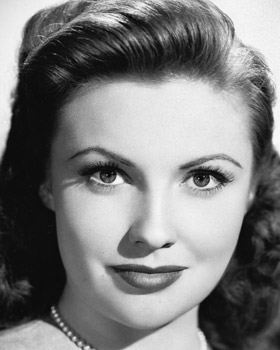
Stars
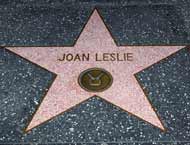
Actress
Born Joan Agnes Theresa Sadie Brodel on
Jan. 26, 1925
in Detroit, Mich.
Joan Leslie began
her career under the name Joan Brodel, as part of a vaudeville act with
her two sisters. The three girls eventually moved to Hollywood, where
Joan landed small roles in over a dozen films before being cast as Velma
the crippled girl in 1941’s “High Sierra,” starring Humphrey Bogart.
The film was her first credit as Joan Leslie.
Leslie went on to play Gary Cooper’s girl in “Sergeant York,” James Cagney’s wife in “Yankee Doodle Dandy” and Fred Astaire’s dance partner in “The Sky’s the Limit.” She appeared in such Warner Brothers classics such as “The Male Animal,” “Thank Your Lucky Stars” and “This Is the Army.”
Her career consisted almost entirely of “girl next door” roles until a contract dispute with Warner Bros forced her move to Republic Studios. There she starred in films that allowed her to spread her wings, including “Born to be Bad,” “The Woman They Almost Lynched” and “Jubilee Trail.”
Leslie retired from acting in the 1950s, instead caring for her twin daughters and taking up clothes design. But many years later, she appeared on the small screen, guesting on such television shows as “The Incredible Hulk,” “Simon & Simon” and “Murder, She Wrote.”
Leslie is named in the Andrews Sisters’ song “Corns for My Country” with the line “We’re not petite like Joan Leslie.” The song centers on the Hollywood Canteen, a club for U.S. servicemen on their way overseas. Leslie was a regular volunteer at the canteen, dancing with soldiers and giving autographs. She also starred with Robert Hutton in the 1944 Warner Bros. film “Hollywood Canteen” based on the famous locale.
Leslie died Oct. 15, 2015 in Los Angeles. She was 90.
Died
Oct. 12, 2015
in Los Angeles, CA
Leslie went on to play Gary Cooper’s girl in “Sergeant York,” James Cagney’s wife in “Yankee Doodle Dandy” and Fred Astaire’s dance partner in “The Sky’s the Limit.” She appeared in such Warner Brothers classics such as “The Male Animal,” “Thank Your Lucky Stars” and “This Is the Army.”
Her career consisted almost entirely of “girl next door” roles until a contract dispute with Warner Bros forced her move to Republic Studios. There she starred in films that allowed her to spread her wings, including “Born to be Bad,” “The Woman They Almost Lynched” and “Jubilee Trail.”
Leslie retired from acting in the 1950s, instead caring for her twin daughters and taking up clothes design. But many years later, she appeared on the small screen, guesting on such television shows as “The Incredible Hulk,” “Simon & Simon” and “Murder, She Wrote.”
Leslie is named in the Andrews Sisters’ song “Corns for My Country” with the line “We’re not petite like Joan Leslie.” The song centers on the Hollywood Canteen, a club for U.S. servicemen on their way overseas. Leslie was a regular volunteer at the canteen, dancing with soldiers and giving autographs. She also starred with Robert Hutton in the 1944 Warner Bros. film “Hollywood Canteen” based on the famous locale.
Leslie died Oct. 15, 2015 in Los Angeles. She was 90.
Related stars
|
Two thoughts about Joan Leslie

http://projects.latimes.com/hollywood/star-walk/joan-leslie/

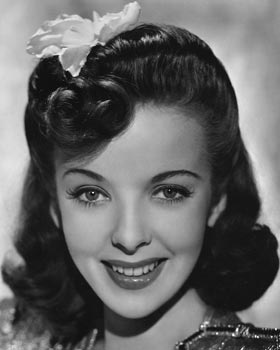
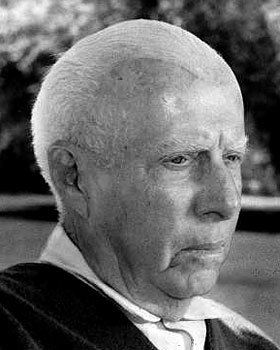
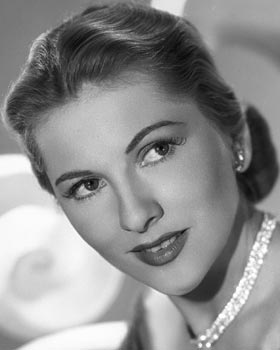
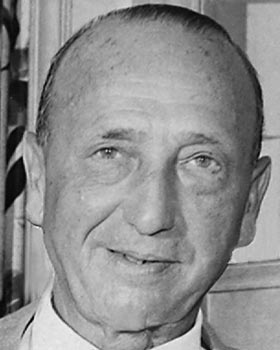

I am heartbroken to hear of Joan's passing. She was my favorite actress of my favorite time in history. She is the last of that golden era. I have almost all her movies, and some great photos of her I collected through the years, and now I will cherish them more. I wish to write more, but I am numb. Just knowing she was with us made my day brighter when I watched her movies. Now, all we have are the memories of when she touched our lives, until we meet again in Heaven. At that time, I WILL ask her what in the world did she say (mouthed actually) at the end of the Sky's the Limit (my favorite movie of hers.
ReplyDeleteI am so sorry she passed, but we all must one day. My prayers are with you Joan, and since I am convinced you are now a Saint in Heaven...toss a little help with your intercession to Jesus my way! :)
You are missed, Joan...sorely missed.
Thank you for the very kind words. She was a beautiful woman inside and out.
DeleteIf I could have met only one actress in the history of movies it would have been Joan Leslie hands down. I had just finished watching Hollywood Canteen for the umpteenth time and when I checked the Internet site I was stunned to hear of her passing last Thursday but my initial disbelief sadly turned real as the numerous other accounts gave the story credibility. Like another Anonymous I too, was numb and it's been three days before I could write these lines now.
ReplyDeleteMs. Leslie had all the gifts that we associate with the very best actresses including beauty, voice (speaking and singing), and expression (acting or dancing). But perhaps an even greater legacy will be the model she set in her private life unlike so many other acclaimed actresses. I take special comfort in knowing that she appreciated a small edible gift that I sent her, less than a month before her passing according to a beautiful note written by her daughter Ellen.
Thank you, dear Lord for giving us Ms. Leslie and the time we had her with us, she will be greatly missed for many things!
Thank you for your kind words...
DeleteInterestingly enough, Joan's sister Mary just died on 3 June 2015. Betty, now Franzalia, Brodel I understand is still alive in Florida.
ReplyDeleteI still feel the loss of Joan as I watched her in my favorite movies of that era. I just saw Star Dust, where Joan and Mary had a small part. I was very surprised how closely Mary and Joan resembled each other. Thus my curiosity was triggered, and I searched to find out "where they are now".
What a nice family from all accounts. You rightly should be very proud.
Thank you. Joan and Betty are both missed by family and friends.
Delete